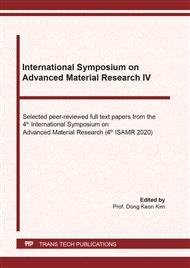p.13
p.18
p.24
p.30
p.35
p.41
p.47
p.52
p.58
An Investigation in Wear and Friction of Oil Seal for Rubbing by Flame-Sprayed Alloy and Ceramic on Lower Carbon Steel
Abstract:
In this paper, the effect of sprayed coating on the surface of carbon steel on friction and abrasion properties of oil seals which are rubbed by various anti-wear coating materials on is investigated experimentally, and compared with the uncoated AISI 52100 bearing steel. We used the block vs ring tester to explore the friction coefficient of hard surface friction of 5 commonly used rubber seal to 4 different coating layers of bearing steel under oil/no oil conditions. Four coating materials are used, which are Ni-Cr-B-Si alloy, Ni-Cr-WC alloy, ceramics, and ceramics. Five varieties of the oil seal material named HNBR, NBR, FKM, ACM, and SIL are subjected to wear tests for the measurements of friction and abrasion. The experimental results show that HNBR has better wear resistance and less friction, ceramics have higher friction and wear resistance than other coatings due to higher hardness. In terms of oil seal and sprayed coating, Ni-Cr-B-Si alloy and ceramic powder are more suitable for surface wear resistance, because of its hardness and wear resistance and the degree of damage to the oil seal are more excellent. Generally, the greater the wear resistance of the oil seal material, the greater its friction with the coating.
Info:
Periodical:
Pages:
52-57
Citation:
Online since:
June 2021
Authors:
Price:
Сopyright:
© 2021 Trans Tech Publications Ltd. All Rights Reserved
Share:
Citation:


